Children Four daughters Occupation Public prosecutor Name Giuliano Mignini | Religion Roman Catholic | |
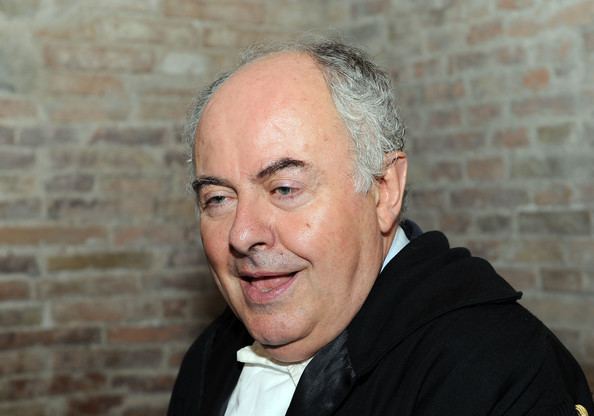 | ||
Known for Monster of FlorenceMurder of Meredith Kercher Similar People | ||
Years active Magistrate since 1979 | ||
Meredith Kercher Murder. Talk with prosecutors Comodi and Mignini, 2017 – English subtitles
Giuliano Mignini (born 1950) is an Italian Magistrate, he currently works as public prosecutor in Perugia, Umbria.
Contents
- Meredith Kercher Murder Talk with prosecutors Comodi and Mignini 2017 English subtitles
- Giuliano mignini defends rudy guede
- Education and career
- The Narducci case
- The Monster of Florence cases
- Early suspicions on Narducci
- Perugian investigation into Narduccis death
- Arrest of journalist Mario Spezi
- Courts findings confirming Migninis scenario
- Allegations of abuse of office
- Finding of no wrongdoing
- Murder of Meredith Kercher
- Satellite prosecutions initiated by Mignini
- Mignini censure
- Brigitta Bulgari
- References
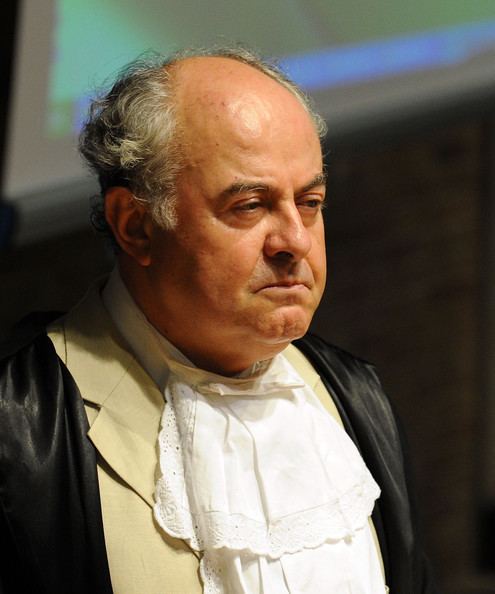
He is known for his involvement as the prosecutor in the investigation of the death of Dr. Francesco Narducci, who was found dead in the Trasimeno lake in 1985. Mignini opened an investigation into his death as a cold case in October 2001, based on evidence that had emerged during another investigation on a phone stalking case and following a request by Narducci's widow. One month later, the Public Prosecution of Florence revealed that they were also investigating on Narducci's death, as they believed he was involved the Monster of Florence serial murders case. Florence requested to merge their investigation with the one carried on by the Perugia office. The investigation resulted in the prosecution of a number of individuals over the following years, on allegations indirectly connected to Narducci's death such as cover-up and side-tracking charges. Most charges were later dropped due to the expiration of limitation statute terms. Courts determined that Narducci had died by strangling and not by drowning as previously declared, while the alleged side-trackings subsequent to his death did take place, including the staging of the corpse finding at the lake by using the body of an unknown.
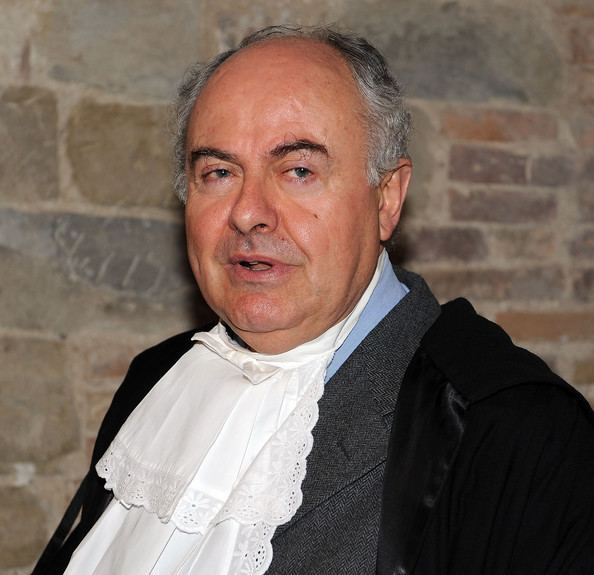
Mignini came to wider public attention as the prosecutor who led the 2007 investigation into the murder of Meredith Kercher, and the subsequent prosecution of Rudy Guede, Amanda Knox and Raffaele Sollecito. The conviction of Knox and Sollecito was eventually annulled by the Supreme Court of Cassation On March 27, 2015. The conviction of Knox and Sollecito was eventually annulled by the Supreme Court of Cassation invokeing the provision of art. 530 § 2. of Italian Procedure Code ("reasonable doubt") and ordered that no further trial should be held, which resulted in their acquittal, in March 2015. The verdict pointed out that as scientific evidence was "central" to the case, there were "glaring defalliances" or "amnesia" and "culpable omissions of investigation activities". The Court, however, acknowledged that it is a "proven fact" that Knox was at the murder scene when the murder was committed while it was not proven "beyond reasonable doubt" that Knox and Sollecito had an "active participation" to the "killing action", and invoked the legal categories of "non punishable connivence" or "concurring in the crime committed by others"; the sentence also acknowledges as "incontrovertible" the fact that Kercher was killed by more than one person and that Guede concurred in committing the murder "together with others".
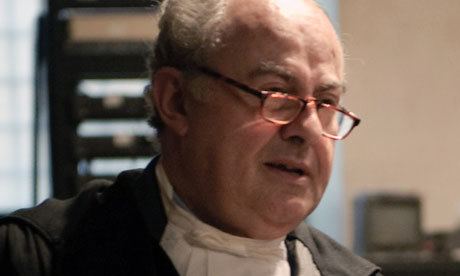
Giuliano mignini defends rudy guede
Education and career
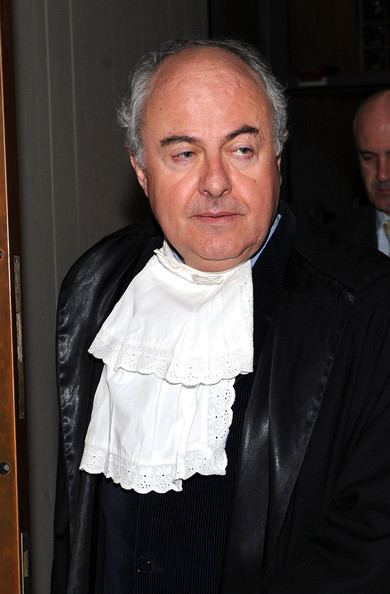
Mignini was born in 1950 in Perugia, the son of a high-school teacher belonging to a family of sculptors. He obtained his law degree from the University of Perugia. He had wished to pursuse a career in the Air Force, but he was rejected by the Pilots Academy because of a form of daltonism. He passed the magistrate's examination in 1979, and worked for one year in Volterra serving as pretore (an investigating judge role which does not exist anymore in the Italian system). He served for several years as judge in the courts of Pisa and Terni, where he worked on different times both as a criminal and as a civil judge. In 1989 he returned to Perugia and served as investigator and criminal prosecutor (sostituto procuratore), between 2004 and 2012 he also had powers as the head of anti-mafia prosecutors (Direzione Distrettuale Antimafia) in Umbria, in 2013 he took a post at the Appeals prosecution office (Procura Generale).
The Narducci case
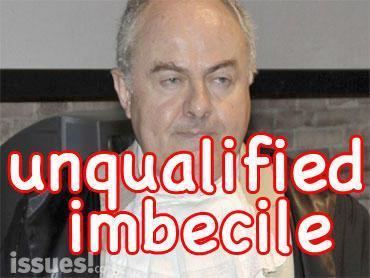
The investigation on the death of Perugian doctor Francesco Narducci (1949-1985) was a case that lasted overall about ten years, between 2000 and 2010. It is one of the investigations connected to the principal investigation on the serial murders known as "The Monster of Florence" case. The Narducci case extended into satellite investigations about activities at subsequent times by multiple individuals, aimed at covering up the circumstances of death or derailing the investigation.
The Monster of Florence cases
A series of 8 double murders that took place around Florence, Italy, between 1968 and 1985 were known as the Monster of Florence murders. At different points in time, different people were tried and convicted for the crimes. A Sardinian man named Stefano Mele had confessed to the 1968 crime and was convicted, but was released many years later, as judges suspected his confession was unreliable. In 1981 a man named Enzo Spalletti was arrested and suspected of one the crimes, he subsequently turned out to be just a voyeurist who used to spy on young couples, and was released months later, albeit he is thought to have witnessed some of the crimes. In 1982 Francesco Vinci, a man native from Sardinia, who had been already connected to the 1968 murder, was suspected of the crimes and arrested under cautionary custody provisions, then released in 1983. Pietro Pacciani was arrested in 1993 and suspected of being the killer of all the murders except the 1968 one, he was found guilty and convicted in 1994, then was acquitted on appeal in 1996 on reasonable doubt instances; the Supreme Court subsequently annulled the acquittal and re-entered evidence that had been previously ruled out on procedural grounds, pointing out that the previous preliminary exclusion of part of the evidence was unlawful. Pacciani was sent to trial again, but he died in 1998 in unclear circumstances only a few days before the scheduled beginning of the second appeals trial. In the meanwhile, prosecutors had extended their scenario and accused further two suspects, Mario Vanni and Luca Lotti, of alleged complicity in Pacciani's murders. Both Vanni and Lotti were tried and were definitively found guilty in 2000. The courts pointed out that, however, the findigns were still incomplete, as they thought there was evidence that "other subjects" were also involved in the murders. In 2005 the Florence Prosecution office investigated pharmacist Francesco Calamandrei alleging his involvement in the cases. Calamandrei was indicted of complicity in the murders in 2007, tried and acquitted in 2008.
Early suspicions on Narducci
Dr. Francesco Narducci's body was recovered from Lake Trasimeno near Perugia, Umbria, in 1985 and was initially determined to be a drowning. His body was discovered a month after the final double-murder linked to the Monster of Florence. The name of Dr. Narducci belonged to a list of "persons of interest" issued by the Florence Police in relation to the Monster of Florence cases since 1987. Police and prosecutors in Florence initially investigated Narducci's death as connected to the murders after a number of anonymous letters were received, but police were unable to find evidence of a connection. According to journalist P. Licciardi, police departments carried on "parallel" and irregular investigations on Narducci since September 10. 1985 in Florence, while a Carabinieri high officer in Perugia ordered the search of Narducci's apartment, without informing superior authorities. The same day, a male nurse at a Florence hospital found a bullet, identical to the ones used in the murders, lying on the floor in the hospital parking before a garage entrance, with its ogive pointing in direction of the hospital's entrance. The police searched the hospital, including doctors' wardrobes. A speculation that a doctor might be involved in the murders already circulated among investigators, since experts ponted out that some of the excissions of body parts from the female victims' bodies apparently had almost a surgical quality (a pathologist testifying about one body said it looked as if the perpetrator "could perform mastectomies").
Perugian investigation into Narducci's death
In the summer of 2001 in Foligno, as the police was investigating an ongoing phone stalking case, some of the conversations they recorded included suggestions that Narducci's had been killed. Two individuals (one man and one woman) threatened a woman that if she did not pay what was owed she would end up like "the doctor killed at the lake", and also mentioning links between Narducci and the suspects of the Monster of Florence cases. Subsequent threatening phone calls to the same woman also referred to the "murder of Pacciani" (one of the suspects in the Monster of Florence case who was found dead in suspicious circumstances) and said that both had been killed by members of a secret society for betraying them. Foligno is under the jurisdiction of Perugia prosecuting office. As a matter of routine management inside the office, the investigation file had been handed over by prosecutor Silvia Della Monica, who had started it, to Mignini. The stalkers appeared to know details about the deaths Pacciani and Narducci which were not available to the public. A man was charged of the phone threats case, he pleaded guilty and was sentenced, ending the case (despite the fact that the voice of at least another woman was recorded among the phone stalkers). Mignini meanwhile became interested directly in the issue of Narducci's death, which they were talking about in the phone calls.
At first Mignini wanted to verify whether there could be a link between Narducci and the woman victim of the phone threats. Based on the content of the phone transcripts, and after hearing other witnesses, Mignini opened an investigation file on suspicion that Narducci might have been murdered and found that the officially stated cause of death was actually unproven, since no autopsy and no body examination was performed at the time, despite that should have been mandatory by law. Mignini suspected that the body finding at the lake was a staging, aimed at covering up the real cause of Narducci's death. The trigger of the investigation was the failure to perform autopsy and not allowing the photographing of the body at the time, despite a massive and anomalous presence of authorities that included even the head of police. A few days after the opening of the investigation, on November 9. 2001, Florence prosecutor Paolo Canessa requested Mignini to merge his file with his own investigation on Narducci, explaining that the doctor's death was in connection with the 'Monster of Florence' case, on which Canessa had opened a new investigation branch.
In March 2002 Mignini requested an experts' opinion to pathologist prof. Giovanni Pierucci about the pictures of the body that were taken on the pier in 1985, Pierucci's report pointed out that medical investigation done at the time was "completely lacking", while assessed the decay of the cadaver in the photo appeared too advanced to be consistent with only five days in water, and recommended the unburial and examination of the body. In late summer 2002 Mignini, assisted by the Florence prosecutors, had Narducci's body exhumed and examined. The original scope of the investigation was to find out the cause of Narducci's death, also prompted by a request by Narducci's widow Francesca Spagnoli, since no autopsy had been performed at the time and no evidence existed to corroborate the stating of drawning as cause of death. Mignini and police at the time were taking for granted that Narducci's body and the one found at the lake were the same person. The pathologist found evidence that the cause of death was not drawning but strangulation. But also, Prof. Pierucci concluded that the body could not be the same body found at the pier. Narducci's body was not decomposed enough to be the body found in water at the time. Also, Narducci's body had hair, while the body photographed at the lake had not. Further expert reports determined that the body on the pier was also shorter than Narducci and had a waist size not compatible with the trousers on the exhumed corpse. Below Narducci's body, buttoned into his trousers, there was also a linen canvas with apparent exoteric symbols. Analysis also revealed that Dr. Narducci was intoxicated with meperidine, an opioid. Mignini believed to have sufficient evidence that the whole finding of the body at the lake had been a staging, performed as part of a cover-up by state authorities, coordinated by the Provincial head of Police (Questore) at the time, Francesco Trio. Mignini alleged that Narducci had been involved in a secret society and killed to keep quiet and that his father, Ugo Narducci, a member of a masonic lodge, had masterminded the cover up. Mignini's theory involved a complicated conspiracy of 20 people, including government officials and law enforcement officers. Mignini indicted 20 people and charged them with the concealment of Narducci's murder. The prosecution dragged on for several years due to conflicting rulings and delays by courts. Narducci's family and colleagues believe that his death was a suicide.
Arrest of journalist Mario Spezi
Florence detectives tapped phones belonging to several individuals related to the Narducci side-trackings case suspects, including journalist Mario Spezi. From some phone conversations - some of which between Spezi and American author Douglas Preston - it appeared that Spezi and others were preparing thmselves to do "something worrying", while it could not be understood exactly what the plot was about. On February 23. 2006, Mignini summoned Douglas Preston for questioning as a person informed about facts related to Spezi's activities. Mignini made Preston listen to one of the phone recordings with his own voice. Mignini stopped the questioning as he suspected Preston of perjury, given a manifest contradiction between his answer and the content of the phone recordings.
In April 2006 the Florence police arrested Italian journalist Mario Spezi together with mobster Luigi Ruocco and ex-Carabinieri officer Ferdinando Zaccaria while they were found trying enter the area of a private villa in a countryside location in Tuscany. The police, on Mignini's orders, had wiretapped their phone conversation as they appeared to be plotting to plant some evidence items related the Monster of Florence inside the villa. Preliminary judge Marina De Roberti, on Mignini's request, ordered the men to be held in cautionary custody, and also formally suspected Spezi of complicity in the homicides of the Monster of Florence case. The request of custody was not motivated by the suspicion of murder, but based on the accusation of attempting to pollute the Narducci investigation. Spezi was held for 23 days, 4 without a lawyer.
In an interview by "The Atlantic" in August 2006, Preston called Mignini "A sincere man and an honest and incorruptible judge", and said "I think he really believed that I was guilty and that Spezi was guilty. I could see that in the interrogation he believed I was a liar. So, yes, I think he was doing his job the best he could".
Courts findings confirming Mignini's scenario
On 22 March 2013 the Third Circuit Court of Cassation (Supreme Court of Italy) ruled that the theory that Francesco Narducci's body was kept "hidden" for about a week was "correct" and that the alleged cover-ups around Narducci's death, including the hiding of his body for five days, in fact took place as in the scenario described by Mignini. The Court of Cassation, annulling a previous ruling, sustained the validity of 17 of the 23 counts alleged by Mignini and sent them back for re-trial, but dropped the additional charge of "mafia association", therefore shortening the time terms for their legal prosecution. Other court rulings on related cases also stated that Mignini's theory was in fact correct.
Allegations of abuse of office
In 2004, the Florence Public Prosecution office discontinued their cooperation with Perugia, and demanded that they alone have the whole investigation file on Narducci's death. Mignini refused to hand over the investigation, claiming that the Trasimeno Lake shore where the body was recovered was in the territory under the jurisdiction of his office. The Florence police also provided Mignini with a recorded wiretapping in which prosecutor Paolo Canessa justified the break up of Florence collaboration by explaining that the Chief Prosecutor of Florence, Ubaldo Nannucci, was "not a free man" and was acting on superior orders. Based on the recording of Canessa's voice, Mignini opened an investigation against Ubaldo Nannucci, and against the Chief of Police in Florence, Giuseppe De Donno, accusing both of them of voluntarily obstructing Police activity and of hindering the investigation on Narducci's death.
In 2006, a Florence prosecutor, Luca Turco, in return charged Mignini and the head of the Florence Mobile Squad, Michele Giuttari (the depertment which had provided Mignini with the recording) with a number of counts, including the alleged fabrication of a false audio recording, plus a number of counts of abuse of office for allegedly ordering the illegal wiretapping of the phones of various police officers and journalists involved in the Monster of Florence case. Some newspapers called the escalation a "prosecution office war". Florence prosecution accused Mignini of carrying on a "parallel investigation" in order to cover up for Giuttari's alleged fabrication of a false recording of Canessa's conversation, and ordered a police raid of his office. Perugian newspapers alleged that in fact Florence ordered the raid in the Perugian office in order to put their hands on the Narducci - Monster of Florence file.
The Florence Prosecution office accused Mignini of taking part in forging a fake audio recording, of abusing his powers as he investigated the head of Florentine police Giuseppe De Donno, and for having wiretapped phone calls of three journalists and two police officers, allegedly for unjustified reasons. Mignini objected that the Florence Magistrates had no jurisdiction on him because of their office's conflict of interest and requested that the investigation be moved to Turin. Preliminary judge Dania Mori turned down his request. In January 2010, a Florence court chaired by judge Francesco Maradei acquitted him of the first three counts of fabricating fake evidence, as Mignini and Giuttari managed do prove that the audio recording was authentic, but found him guilty of the remaining four counts of exceeding the powers of his office. He was given a 16-month suspended sentence. Mignini appealed the conviction, saying "My conscience is clear, I know I did nothing wrong." He remained in office through the appeal process, as Italian law does not consider convictions final until all appeals are exhausted, but delayed taking a post at the Procura Generale where he had been already appointed. According to Rome-based journalist and author Barbie Latza Nadeau, even if Mignini were convicted, offenses such as this are rarely grounds for removing a prosecutor from office. In November 2011, a Court of Appeals accepted his preliminary objection and annulled the previous conviction, also declaring the prosecution by Florentine magistrates illegitimate - since some of the Florence prosecutors were also the offended parties - and sent the investigation file to a prosecutor in Turin. The Prosecution General of Florence appealed against the decision at the Supreme Court, so factually blocking the transfer to Turin for at least another year. In February 2013 the Florence office lost their appeal and the Supreme Court ordered the investigation be moved to Turin. Mignini said "It took me 7 years to be right" In 2016, the court of Turin dropped the remaining charges due to statutory terms expiration.
Finding of no wrongdoing
While the Italian justice system does not prosecute criminal allegations beyond statutory terms through penal courts, Italian Magistrates are still subjected to a judgement also by a disciplinary court of the High Council of the Judiciary (Consiglio Superiore della Magistratura, or CSM) which seeks to find out facts in the merits, even if the Magistrate has already been acquitted of criminal charges on technicalities, or when there is still reasonable doubt. In March 2017 the CSM disciplinary court acquitted Mignini of all allegations, and they found that in his conduct "there was no wrongdoing".
Murder of Meredith Kercher
Meredith Kercher was a young woman murdered in Perugia on 1 November 2007. Mignini was one of the two prosecutors who directed the investigation of the case.
In October 2011, Mignini told a reporter from the British newspaper The Guardian "I have felt under attack ever since I investigated Narducci. It all started there." He further suggested that the trial for abuse of power was related to persecution for his role in the Monster of Florence case and blamed American author Douglas Preston, co-author with Spezi of a book about the case, of masterminding a U.S. press campaign against him over the Knox case. As part of his summing up in the first Knox appeal he said "our judicial system has been subjected to a systematic denigration by a well-organised operation of a journalistic and political nature".
Preston has criticized the conduct of Mignini in the trial. In April 2009, Preston appeared in a segment of 48 Hours on CBS, in which he argued that the case against Knox was "based on lies, superstition, and crazy conspiracy theories". In December 2009, after the verdict had been announced, he appeared on Anderson Cooper 360° on CNN and described his own interrogation by Mignini.
In 2013, Knox and Sollecito's case was committed to another prosecutor, Alessandro Crini, who requested and obtained the convictions in their retrial. Knox and Sollecito were acquitted by the Supreme Court of Cassazione on 27 March 2015, ending the case, even though the court stated that it is a "proven fact" that Knox was at the murder scene during the killing and that Meredith Kercher was killed by multiple persons.
Satellite prosecutions initiated by Mignini
In February 2013, Mignini launched a defamation suit against Raffaele Sollecito, for allegations in Sollecito's book, Honor Bound, including claims of secret negotiations between Mignini and Sollecito's family.
Mignini censure
On December 4, 2015 Mignini was disciplined by the High Council of the Judiciary for violation of correct procedure in the arrest of Sollecito in November 2007. The Prosecutor General of the Supreme Court requested his acquittal. Mignini was defended by judge Piercamillo Davigo. The disciplinary panel stated that he issued an oral order of prohibiting legal counsel with Sollecito, instead of issueing a written order as provided by the law. He was issued a censure.
Brigitta Bulgari
In June 2010, Mignini was the prosecutor involved in the case of porn star Brigitta Bulgari who was arrested and held for 11 days after being charged with child pornography; this followed the surfacing of a mobile phone video showing 15-year-old boys touching her breasts while she performed as a stripper in an Umbria night club. Sexual contact with minors itself may be not punishable under Italian law, but it is illegal to produce videos. Bulgari had her charges dropped in October 2011 based on a preliminary judge assumption that "Bulgari was not aware that there were minors in the club" and "because of intense lights she could not see whether people were filming". Bulgari stated that she was "just trying to make a living" and that she felt sorry for Amanda Knox, pointing out that they were both investigated by the same prosecutor. She also said that she would seek monetary damages for "muddying her name" and planned to write a book about her experiences after arrest and that she was giving up her work as a porn actress to become a disc jockey.
